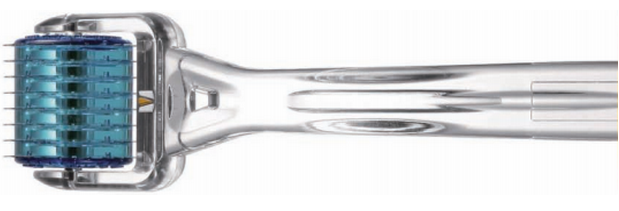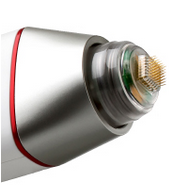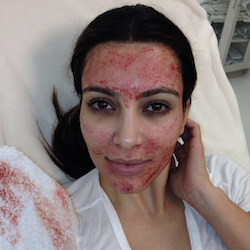How it works:
Share your skin goals and snap selfies
Your dermatology provider prescribes your formula
Apply nightly for happy, healthy skin
How it works:
How it works:
Share your skin goals and snap selfies
Your dermatology provider prescribes your formula
Apply nightly for happy, healthy skin
How it works:
Post-acne scars needling you? Try this.
How to smooth skin texture after you’ve Cur(ology)ed your acne



So your face has finally recovered from the latest breakout. What do you do about the marks left behind? There are lots of options out there, but some are more risky (and expensive) than others. Plus, if you’ve got a darker skin tone, the go-to laser or light treatments might not be effective for you.
Let’s face it: post-acne scar reduction is a…prickly subject. That’s where the derma-roller comes in. Micro-needling can improve skin texture and appearance with minimal recovery.
PSA: We don’t recommend this while you’re using Curology cream for reasons we’ll explain later on!
Here, we delve into the at-home and medical-grade micro-needling options, as well as some of the more interesting (if not yet proven) applications of the technique.
Why would I want to roll tiny needles on my face?!

These spiky devices may bring torture instruments to mind, but they’re said to help reduce the appearance of post-acne scars (and wrinkles, too).
Micro-needling works by stimulating your skin’s production of collagen and elastin. Basically, the microscopic punctures create pinpoint areas of “injury” on the skin, which kicks your skin into high-gear reconstruction mode. The result of micro-needling is, basically, getting your skin to work harder to heal itself.
Think of it like going to an acupuncturist — the needles are the same size. The depth of penetration in micro-needling can vary from 0.25–2.00mm and upward, which is nothing compared to the depth of some acne scars!
You can buy micro-needling tools to use at home, but they aren’t as effective (or safe) as what you’ll get in a professional’s office. There’s the standard derma-roller — a roller tool with wheels of needles, which is rolled across the skin — and the derma-pen, a pen-sized device with a cluster of needles at the top, which is electronically powered to “stamp” the skin. Some people see short-term results from derma-rolling, but it comes with a few risks.
Why NOT to DIY
You could get an infection. If performed outside of the medical environment, there is some concern regarding the sterility of micro-needling devices. For example, some instruments allow for the tip to be removed, but the rest of the device can’t be easily sterilized. So, there is a risk of infection.
You could have a bad reaction. Micro-needling can result in the absorption of topical products that were not designed to be introduced into the skin! Even beneficial ingredients like vitamin C or retinol can cause inflammation when driven into the deeper layers of the skin — they’re meant to work in the uppermost layers of skin. A recent article reported allergic reactions including rashes, red bumps, fever and joint pain following micro-needling at a spa where clients were pretreated with vitamin C serums and other topical products.
At-home micro-needling devices aren’t regulated like actual medical devices. Unlike what you’ll get in a dermatologist’s office, that derma-roller you bought was probably not reviewed for safety by the Food and Drug Administration. Some simple medical devices can be exempt from FDA clearance if they are equivalent to a device that is already exempt — a dangerous loophole when it comes to making hundreds of tiny holes in the protective top layer of skin!
You could go overboard and mess up your face. Especially with at-home devices, there is the risk of overdoing it. You might apply too much pressure and cause micro-tears in the skin, as well as incite inflammation and reactions when products applied onto the skin penetrate more deeply than intended.
Can I use it with Curology?
Please don’t! Our patients frequently ask whether home derma-rolling is okay to do before applying prescribed topical medications. We generally advise our patients not to use a derma-roller while using Curology medication, as this can interfere with the skin adjusting to the treatment.We also advise our patients not to use these devices before applying their Curology prescription or other topical medications, due to the concerns about absorption and irritation mentioned above.
It’s best not to use any topical product on broken skin. We also advise temporarily pausing your Curology if you get an aggressive in-office treatment from your local physician or aesthetician. Resume Curology only after your skin is completely healed from any procedure.
In-office micro-needling
Micro-needling done in a medical office works by the same principles as at-home micro-needling. However, when performed with topical anesthesia to allow for deeper penetration, in-office micro-needling may offer more improvement than at-home options, and with less downtime, less risk, and less expense than laser or other treatments.

A newer variation, microneedling fractional radiofrequency, uses devices that conduct radiofrequency energy into the skin, resulting in tightening to correct wrinkles, scars and skin texture.
What about lasers?
Cosmetic lasers have long been go-to in-office devices for the treatment of scars and wrinkles. However, the heat that lasers produce can result in unwanted pigment change in darker skin types. So micro-needling may be a better choice than ablative laser treatments for patients with darker skin tones, since micro-needling doesn’t produce heat. Your doctor can help you decide which option makes the most sense for you.
What about the “Vampire Facial”?
The procedure known as the “vampire facial” became widely known when Kim Kardashian posted her gory “after” photo on Instragram.

The vampire facial is a variation of the micro-needle procedure, where the patient’s own blood is drawn, centrifuged, and the red cells discarded. The remaining platelet-rich plasma (PRP) is applied topically before the needling procedure.
In a variation of the Vampire Facial, the PRP is injected in the same way other fillers are used, in which case the micro-needling is not done — this is known as the “Vampire Facelift”. More research is needed to assess whether either of these procedures offer any long-term improvements to the skin.
What to do on the daily?
Use Curology. The ingredients in your custom Curology cream can help gradually improve post-acne spots and skin texture over time, while also preventing new breakouts from happening down the line. Make sure to share your Curology treatment plan with any provider treating your skin with any of the solutions in this post, because the right combination of treatments can be a big win for your skin!


Curology Team